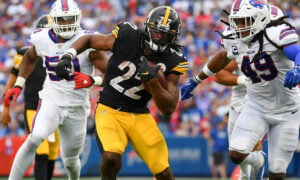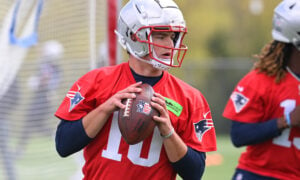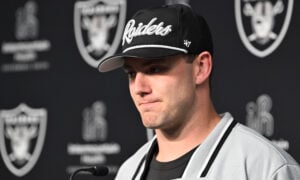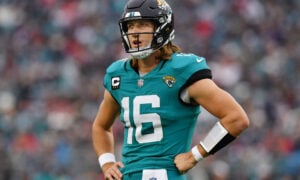How and Why to Trade Back in Your Rookie Draft
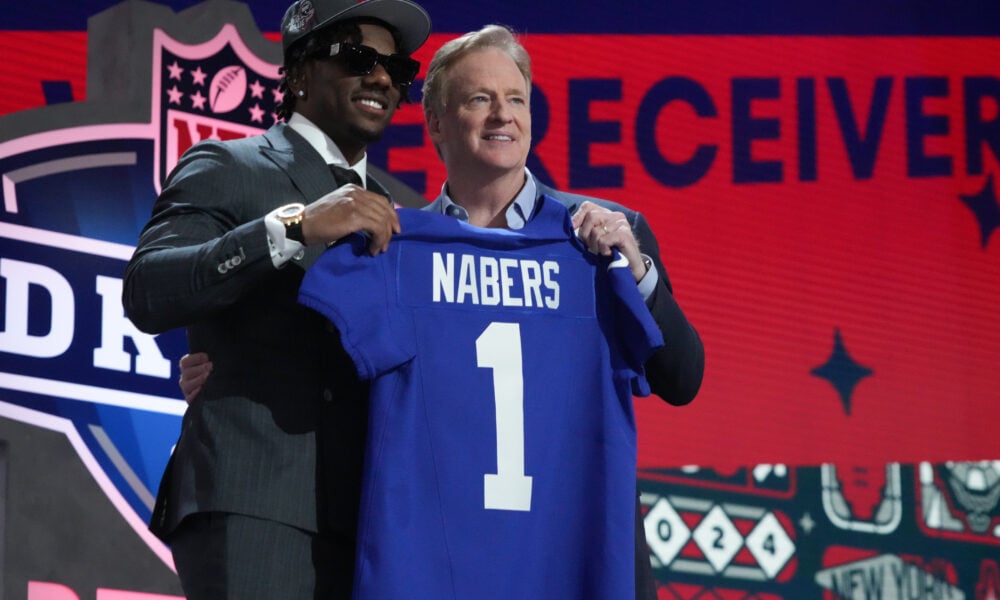
For many of us in the dynasty community, the end of the NFL Draft signals the official beginning of rookie draft season. The NFL Draft ends on Saturday, and many leagues start drafting on Monday morning. I’ve heard of some who start as early as Saturday night.
Despite all of the leagues that start their drafts as soon as possible, many leagues wait a few weeks or sometimes a few months to let the dust settle. Many commissioners know how busy some dynasty owners with multiple teams are this time of year, and they intentionally bump their drafts to June or July, and sometimes even later. The more time passes, the more information we can gather from earlier drafts, and we can use that during our drafts. One of those points of reference is understanding what fair trades look like drafts and learning the value of this year’s picks, especially when you’re trading back in the draft.
Why?
Why do people trade back in drafts? Typically, the main reason to trade back is to acquire more draft picks, taking the quantity over quality approach. This year’s class is one of the deepest classes I can ever remember, which you think would lead to more drafters looking to trade back; however, this draft is also very top-heavy, so many people aren’t looking to move back this year. Also, knowing this year’s class is deep, people with multiple late picks aren’t too motivated to flip them for an earlier pick this year. I’m typically a serial trade backer, and thus far, with approximately seven drafts under my belt already, I’ve only made one trade back despite multiple offers.
The 2024 Class
One of the most significant factors in trading this year is the top of the class. In superflex leagues, there has been a steady top eight this year: the big three receivers (Marvin Harrison Jr, Malik Nabers, and Rome Odunze), the top four quarterbacks (Caleb Williams, Jayden Daniels, Drake Maye, and JJ McCarthy), and the top tight end (Brock Bowers). Following the NFL Draft, more often than not, Bo Nix and Xavier Worthy are competing for that ninth spot, but for the most part, they’re rounding out the top ten in almost every superflex draft.
Knowing this, many dynasty owners are unwilling to trade back if they’re moving out of the top eight or top ten. I have seen a few deals where someone is moving down from 1.03 in exchange for something like 1.06 and 1.08, knowing they can get whichever two players in the big eight fall to them there. If you’re QB-hungry, you’ll probably have to get into the top eight to ensure you land one of the top five quarterbacks. If you’re not willing to overpay, you might have to aim for the 1.10-2.02 range and hope Michael Penix falls to you.
In 1QB leagues, you’ll see more variance compared to superflex drafts. It seems like every single draft has begun with Harrison, Nabers, and Odunze – then it goes off the rails a bit. Teams seem to be drafting for need, and I’ve seen Jonathon Brooks, Caleb Williams, and Brock Bowers come off the board fourth. From what I’ve seen, this uncertainty has led to more early trading in single quarterback drafts than in superflex drafts.
Some Examples
I’ll start with a recent trade back I made in a league. I was on the clock with pick 3.07 in a single-quarterback, standard-scoring league. My highest-ranked players still available were Javon Baker, Ja’Lynn Polk, and Tyrone Tracy – who I like, but none of them are considered a must-have option for my roster. I was offered pick 4.04 and a future third.
Considering I didn’t love anyone on the board and was only moving down nine spots while picking up an extra third-round pick in the process, it seemed like a no-brainer. The team selected Michael Penix with 3.07, a player I had no interest in whatsoever in a 1QB league. In this league, we can also draft free agents in addition to rookies, so with pick 4.04, I was able to grab Khalil Shakir, who was still sitting on waivers. He is likely going to lead the Bills in targets in 2024. I already consider this trade back a significant win for my franchise, as I am banking on Shakir becoming one of 2024’s biggest breakout players as Josh Allen‘s potential WR1 in Buffalo.
Looking at DLF’s Trade Finder, I wanted to see what trade backs are taking place. I wanted to start at the top, with pick 1.01, as Williams and Harrison Jr are locked in in superflex and single quarterback drafts, respectively. Here are a few recent trades involving the 1.01:





You’ll see in these deals that people are willing to move back only enough to still get one of the top players. In all of the 1QB leagues, the owner trading the 1.01 remained in the top four. In the single superflex example, they obtained the 1.09 – likely Bo Nix. This was all in addition to the extra picks they were able to accumulate, too. If you’re convinced that Caleb Williams is the next Patrick Mahomes or Marvin Harrison Jr is the next, well, Marvin Harrison, it might take you a little more to come off of the 1.01.
It is often difficult for teams to get away from the 1.01, knowing they are guaranteed to get their top guy – and arguably the top guy in the class. I slipped down a bit to see what people were getting for the 1.04, and I found some decent returns.


A small move from 1.04 to 1.07 – keeping you in that top tier – while locking up 1.10, too, makes that a steal. Looking at DLF’s recent ADP, you’re basically giving up Xavier Worthy or Brock Bowers for Jonathon Brooks AND Keon Coleman. Yes, please.
In the other trade, the owner moving 1.04 got a decent haul in return for moving all the way down to 1.10, picking up an extra second and third in a very deep class while also swapping a fifth for a sixth. Knowing what has still been on the board at 2.10 and 3.10, I like this too.
I tried to dig a little deeper and jumped to pick 1.10 to see if people were trading back from the late first to acquire multiple second-round picks or future firsts, and to my surprise, I didn’t find many examples. Actually, quite the opposite; pick 1.10 has been used a bunch to move up in drafts. I did find one example to share, though:

I mainly tried to include trades that were strictly picks for picks, but this deal involving a player was a good example. At 1.10, I’m guessing the owner needed a QB2 for 2024. With Bo Nix probably already gone at 1.09 and Michael Penix riding the bench in 2024, I can see how this would make sense for the 1.10 owner. They only move down three slots to 2.01, get a starting QB2 in Daniel Jones, plus add a couple of late-round picks (This is an IDP league, too, so those additional picks are useful in a deeper draft). I’m just making up the scenario that makes the most sense to me here, and if my imagination is correct, I also like this deal.
Unlike the Jimmy Johnson-Cowboys old-school draft pick trade value chart in the NFL, there is no magical formula to trading back in dynasty drafts. Owners often plan on making moves heading into drafts, whether they want to move up for bona fide studs or to move back and build their roster through sheer volume of selections. It seems like dynasty managers are more content to stay in place this season than in years past, but it is very early in the data-collecting process of draft season. If you find yourself on the clock this year, unless you’re absolutely in love and can’t live without a particular player on your roster, be sure to offer the pick and see what kind of return you can get for moving back. Once you get out of the top eight, this class is deep enough that you might be able to secure a big enough haul of picks to reshape your roster for years to come.
- 2024 Off-Season Mock Drafts: Comparing Superflex and Single-Quarterback Rookie Drafts - May 18, 2024
- A Hater’s Guide to the 2024 Running Back Class - May 17, 2024
- A Hater’s Guide to the 2024 Quarterback Class - May 14, 2024






